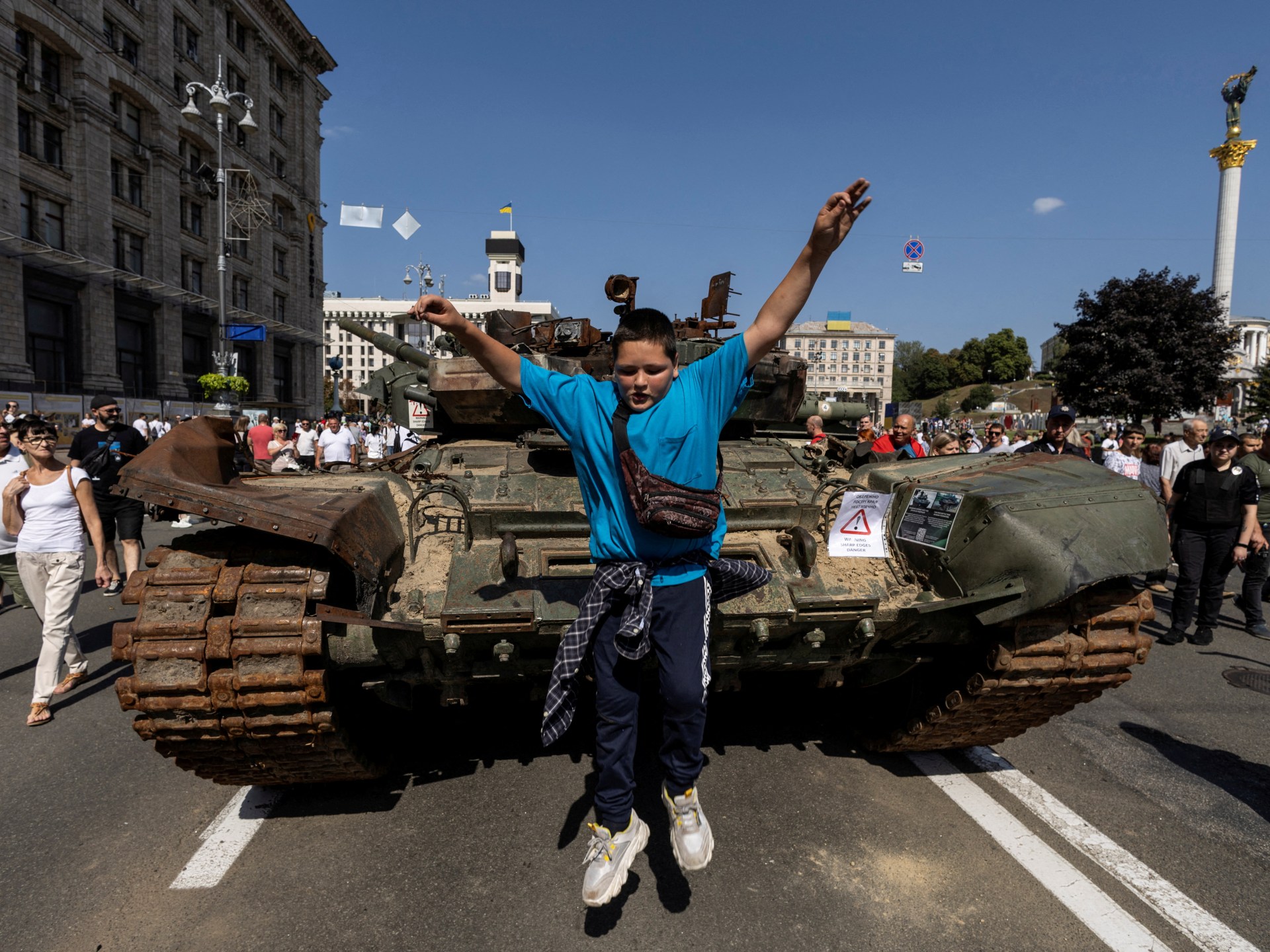Timeline: British Prime Minister Liz Truss in crisis | Business and Economy News
British Prime Minister Liz Truss has fired her finance minister Kwasi Kwarteng and scrapped parts of their unpopular economic package in a desperate bid for political survival, less than 40 days into her premiership.
With financial markets in turmoil, a chastened Truss said on Friday that she accepted her government’s plans for unfunded tax cuts had gone “further and faster” than investors were expecting.
Here is everything that has happened since Truss became the United Kingdom’s prime minister:
Truss wins leadership contest
On September 5, then Foreign Secretary Liz Truss was named leader of the governing Conservative Party, taking power as the UK’s next prime minister at a time when the country faces a cost-of-living crisis, industrial unrest and a recession.
Long the frontrunner in the race to replace Boris Johnson, Truss became the Conservatives’ fourth prime minister since the 2015 election.
Truss, 47, promised to act quickly to tackle the UK’s cost-of-living crisis, saying that within a week she would come up with a plan to tackle rising energy bills and secure future fuel supplies.
Truss signalled during her leadership campaign she would challenge economic conventions by scrapping tax increases and cutting other levies that some economists said would increase inflation.
That, plus a pledge to review the remit of the Bank of England while protecting its independence, would later prompt some investors to dump the pound and government bonds.
Truss appoints cabinet
On September 7, hours after stepping into the top office, Truss appointed a new cabinet at the formal request of Queen Elizabeth II.
The extensive reshuffle saw 15 new faces in top government positions, while 16 members from the previous cabinet remained in the newly formed cabinet.
Among the most senior members was Kwasi Kwarteng as chancellor of the exchequer. He replaced Nadhim Zahawi, who got the job in July.
Kwarteng previously served as business secretary since January 2021, when he became the first Black Conservative Party cabinet minister.
Queen Elizabeth II dies
On September 8 the 96-year-old monarch died. A 10-day period of national mourning followed, with the queen’s funeral held on September 19.
Kwarteng announces mini-budget
On September 23, the British government unveiled a new mini-budget in the parliament, intending to cut household taxes and energy bills while driving economic growth.
In what represents the most significant tax cut budget since 1972, Kwarteng’s sweeping new budget would see cuts to national insurance, stamp duty and the top tax of rate.
Kwarteng said the budget would address three key things: the energy price guarantee, equal support for businesses, and an energy markets financing scheme.
A plan was brought forward to cut the lowest income tax rate from 20 to 19 percent and reduce the highest rate from 45 to 40 percent.
Financial markets in turmoil
Kwarteng’s tax cuts and energy price freeze, aimed at boosting the UK’s recession-threatened economy, appeared to have the opposite effect as traders warned of ballooning debt to pay for the incentives.
Following the budget, UK government bond yields soared and on September 26 the pound hit a record low at $1.0350, as the sweeping unfunded tax cuts shook the market.
Bank of England intervenes
In a highly unusual intervention, the International Monetary Fund (IMF) said on September 27 that it was “closely monitoring” developments and urged the government in London to change tack.
The next day, the Bank of England (BoE) stepped in to shore up market confidence in the UK after the IMF criticised the UK’s budget, arguing it “will likely increase inequality” and worsen inflation.
The BoE announced it was temporarily buying up 65bn pounds ($73bn) worth of long-dated UK government bonds “to restore orderly market conditions”.
Truss defends economic plan
On September 29, Truss defended her economic plan and shrugged off the negative reaction from financial markets, saying she is willing to make “difficult decisions” to get the economy growing.
In her first public comments since the chaos sparked by the mini-budget, Truss said the UK was facing “very, very difficult economic times”.
But she said the problems were global and spurred by Russia’s full-scale invasion of Ukraine.
U-turn on top rate of tax
In a humiliating U-turn, the government reversed plans to cut the country’s highest rate of income tax.
Announcing the government’s U-turn, Kwarteng said the proposal to slash the top rate – which made up about two billion pounds ($2.2bn) out of the overall 45 billion pounds ($50.4bn) tax-cutting plan – had “become a distraction from our overriding mission to tackle the challenges facing our country”.
“We get it, and we have listened,” he said in a statement released hours before he was due to give a keynote speech at the Conservative Party’s annual conference.
Truss sacks Kwarteng
Truss remained under pressure to scrap more of the ill-fated mini-budget and on October 14, she appointed Jeremy Hunt to replace Kwarteng as chancellor and reversed the plan to cut corporation tax, scrapping a key part of the economic plan that had sparked market turmoil.
Speaking at a news conference, she said the corporation tax will rise to 25 percent from April next year.
Truss said she had decided to keep the rise, a move which would boost the public finances by 18 billion pounds ($20bn).
The Bank of England’s intervention drew to a close.





Pingback: miami boat rental club
Pingback: icarus zoomies edibles uk
Pingback: cartel oil 2g disposable
Pingback: kinetisch zand
Pingback: ติดตั้ง ais fiber